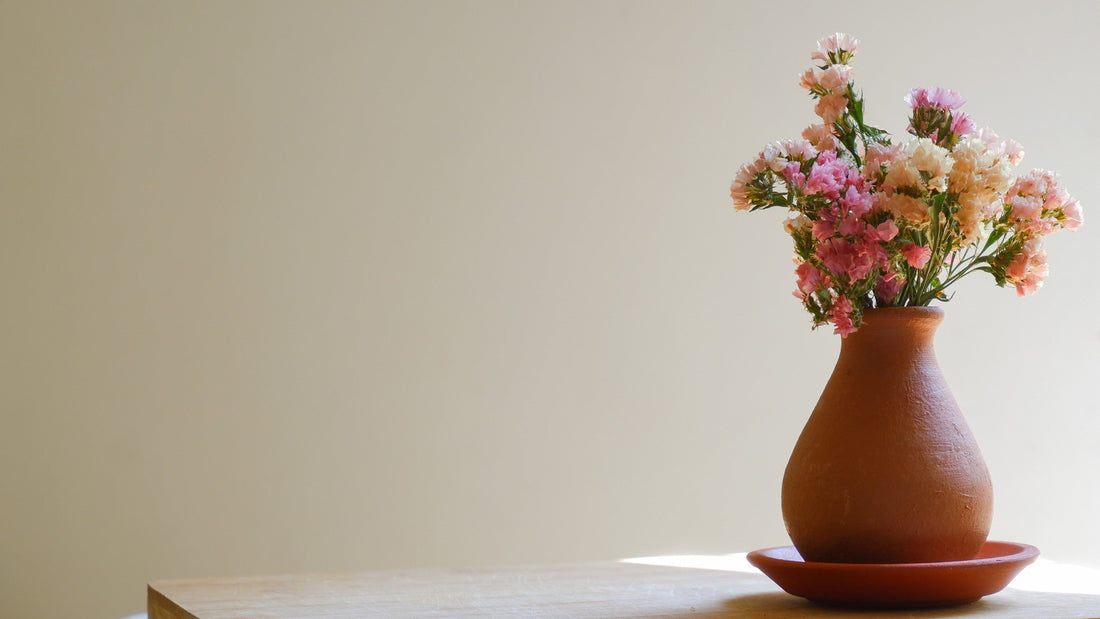
DRIED FLOWERS- Preserving Nature, Effortlessly
Share
Flowers have always been a source of beauty and joy for me. But they last short and it’s expensive to purchase fresh flowers every week. That’s when I came across the concept of dried flowers. Eager to try, I hung a bunch of different flower varieties upside down in a shaded dry space. Within days, they transformed into delicate rustic keepsakes.
There are different ways one can preserve flowers based on how you want to use them—the most popular ones are air drying, silica gel, resin drying, and pressing. I particularly love air drying because it's a simple method that requires no equipment and I can make bouquets to display in cute vases

How to Air Dry Flowers?
Use fresh, healthy blooms, cut the stems to the desired length, and remove unwanted foliage. Make small bundles and, using twine, hang them upside down in a shaded, well-ventilated spot (away from direct sunlight). Keep checking the flowers every couple of days. Depending on the season and the type of flower, it might take between 7-10 days to fully dry. Once dried, gently take them down and display them in elegant vases.
Best Flowers for Air Drying?
In my experience, the best flowers to dry by this method are:
- Baby’s Breath (Gypsophila)
- Limonium's
- Eucalyptus
- Roses (can get molds easily)
- Statice
- Gomphrena
- Hydrangeas
- Solidago
- Bunny Tail Grass
-
Other varieties of grasses
Flowers That Don’t Dry Well with This Method
- Gerberas
- Chrysanthemums

How Long Do Dried Flowers Last?
This depends on two factors:
- Flower Variety – Thin, papery flowers last longer than denser ones. Limonium's, Gypsophila, Statice, Hydrangeas, and grass varieties last for a long time compared to Roses and Solidago. If maintained well, they can last for a year or more. However, Roses tend to mold quickly (after a month or two) due to their dense petal layers.
- Season – Weather plays a key role in the longevity of dried flowers. Regular moisture and humidity can lead to fungus, especially during monsoons. They need a dry environment to last longer.

Tips to Maintain Dried Flowers-
- Always choose healthy blooms while drying. Do not use rotten or aged flowers.
- Avoid direct sun exposure as it results in fading.
- Display them in dry spots away from moisture.
- Use a soft paintbrush to gently dust the blooms once a month. This keeps them dust-free and mold-free.
Drawbacks of Air Drying Flowers-
- Loss of Color – Flowers fade to muted or brownish tones compared to drying with silica gel or pressing techniques.
- Brittleness – Dried flowers can become fragile and prone to crumbling if handled roughly.
- Shrinking & Wrinkling – Some flower varieties like Chrysanthemums shrink or lose their original shape, making them look less vibrant.
- Exposure to Dust & Mold – Personally, this is the biggest drawback. Over time, dried flowers collect dust and may develop mold in humid conditions.
- Limited Suitability – Some flowers, like Chrysanthemums and Gerberas, do not air dry well.
Dried flowers are a beautiful and sustainable way to preserve nature’s charm. While air drying has some drawbacks, its affordability and simplicity make it a wonderful choice. What started as an experiment has now become a passionate hobby and an integral part of my business. Every now and then, I send a tiny bundle of dried flowers along with my orders, sharing their rustic elegance with my customers.

